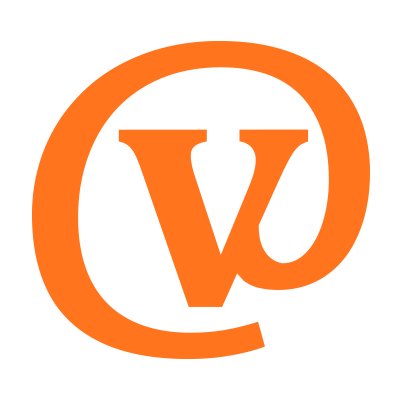Just three years ago, HPV vaccination uptake in Ireland was running at 87%. The school-based programme was going well, and thousands of girls had completed a two-dose vaccination course which will significantly reduce their risk of cervical cancer and other HPV-related diseases.
Then an online campaign to undermine the vaccine began to gather momentum. A small number of stories surfaced on social media claiming links between the timing of the vaccination campaigns and the subsequent development of illnesses.
Health authorities and experts noted that the rate of the conditions in question were the same before and after the introduction of the vaccine, while the WHO and European Medicines Agency confirmed that the vaccine is safe and effective.
But the campaign against the vaccine went viral. On social media, local radio – and, in November 2015, on a commercial television station – fear began to trump science.
By the autumn of 2016, cancer doctors feared that uptake would dip below 70%. At the turn of 2017, authorities rolled out a catch-up campaign as preliminary figures showed uptake had hit 50%.
Ireland’s experience of the MMR vaccination crisis in the late 1990s – during which a debunked study sparked a decline in vaccination against measles, mumps and rubella – led some to worry that the HPV vaccine rates would not be easily restored. The experience of Denmark and Japan, where HPV rates fell significantly and have yet to recover, did not auger well.
Turning the tide
For some health campaigners, such as the Irish Cancer Society, the problem was a perplexing one. The cancer society and women’s health groups had pushed hard for the introduction of the HPV vaccine ten years earlier – forcing a government u-turn on an earlier decision to delay reimbursing the cost of the vaccine.
As vaccination rates faltered, civil society groups and health authorities rallied around and spoke to the media, schools, parents – and anyone else willing to listen. And it worked.
‘Provisional data for the 2017/2018 HPV school campaign shows uptake of 61% for dose 1 of HPV vaccine,’ says Dr Brenda Corcoran who leads the Health Service Executive’s National Immunisation Office. ‘This is a testament to all the people on the ground who have worked to get the message across.’
- The HSE created a HPV microsite as part of its National Immunisation Office website which is a member of the WHO Vaccine Safety Net network.
- Information material and consent forms were redesigned to address the concerns of patients
- Factsheets were developed for teachers, schools, GPs and pharmacists
- Radio and television advertising supplemented articles and interviews in mainstream media
- Social media-friendly videos were developed featuring girls who had had the vaccine, a cervical cancer expert, and an expert from WHO Europe
- The National Immunisation Office ran effective Twitter and Facebook campaigns to ensure its messages reached target audiences
- A coalition of 40 NGOs was launched in August ahead of the autumn vaccination programme.
The HPV Vaccination Alliance, a large group of leading health, children and women’s groups, ensured that the public saw a broad coalition standing up for the vaccine. It includes the Irish Women’s Council, children’s rights charities, universities, doctors’ groups, and several cancer charities.
In line with HSE campaigns, it had simple and consistent messages – including the fact that 40 women would die as a result of parents opting out of the vaccination programme.
Politicians were strongly supportive of the vaccine, as were high-profile health advocates such as celebrity doctor and broadcaster Dr Ciara Kelly.
Grassroots engagement
Behind the public campaign, the HSE was engaging directly with a wide range of stakeholders. ‘There was a huge amount of training provided for GPs, practice nurses, pharmacists – anyone who would meet the parents of school-going children,’ the HSE’s Dr Corcoran told Vaccines Today.
The HSE also ran focus groups with parents, prompting the increased use of video and revised presentations of information on safety and effectiveness. ‘Girls who had had the vaccine and women affected by cancer came forward and offered to help,’ says Dr Corcoran. ‘External experts from the WHO also reinforced the message which parents often find valuable and reassuring.’
Vaccinators – usually teams of doctors and nurses – have reported a positive and open atmosphere in schools this year, compared to last year when anti-vaccine campaigners were in full flight.
The news that HPV vaccination rates are up has been warmly welcomed in the mainstream media and by politicians.
Really great news -big increase in uptake of life saving HPV vaccination! Proud to work with many dedicated people in @HSELive & HPV Alliance to bring this about. No room for complacency. Must continue to debunk myths. Thanks @susmitchellSBP for highlighting importance of this https://t.co/2wC8FcptW1
— Simon Harris TD (@SimonHarrisTD) December 3, 2017
The HSE is hoping to build on this improvement by offering a catch-up dose in March to girls who missed out on their first HPV vaccine. Girls who had their first dose will have their second dose in schools in the spring.
Separately, Ireland’s Health Information and Quality Authority (HIQA) is assessing whether the HPV vaccine should be extended to boys. It will report before the end of 2018.
In the meantime, experts and civil society groups are working to push vaccination rates in girls back to towards their peak




Pingback
April 15th, 2022
[…] and have led to plummeting cervical cancer rates, others haven’t been as successful. Denmark, Ireland, the USA, and Japan are just some of the countries that have had unsuccessful campaigns in […]